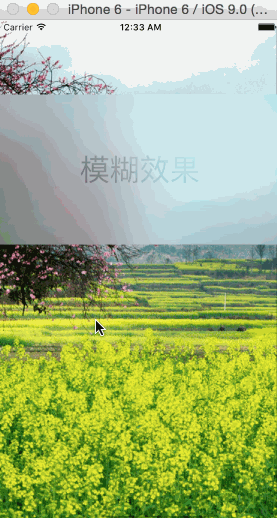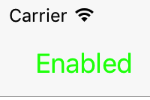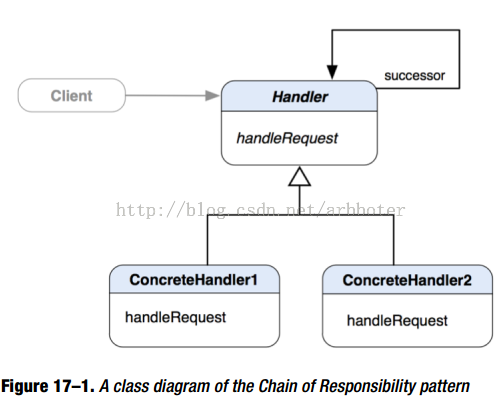iOS模糊效果的完成辦法
編輯:IOS開發綜合
本文實例為大家分享了IOS模糊效果的3種辦法,供大家參考,詳細內容如下
方案一:應用零碎的CoreImage(濾鏡)
重點了解CIImage,CIFilter,CIContext,CGImageRef
濾鏡處置的進程比擬慢,會形成加載圖片遲緩的景象(等一會才看到圖片),盡量放到子線程執行
- (void)viewDidLoad {
[super viewDidLoad];
// 加載一張圖片
UIImage *image = [UIImage imageNamed:@"che"];
/**************CoreImage局部**************/
// 1.創立CIImage
CIImage *ciImage = [[CIImage alloc] initWithImage:image];
// 2.創立濾鏡CIFilter
CIFilter *blurFilter = [CIFilter filterWithName:@"CIGaussianBlur"];
// 2.1.將CIImage輸出到濾鏡中
[blurFilter setValue:ciImage forKey:kCIInputImageKey];
// 可以經過該辦法檢查我們可以設置的值(如模糊度等)
NSLog(@"%@", [blurFilter attributes]);
// 2.2設置模糊度
[blurFilter setValue:@(2) forKey:@"inputRadius"];
// 2.3將處置好的圖片輸入
CIImage *outCiImage = [blurFilter valueForKey:kCIOutputImageKey];
// 3.CIContext(option參數為nil代表用CPU渲染,若想用GPU渲染請檢查此參數)
CIContext *context = [CIContext contextWithOptions:nil];
// 4.獲取CGImage句柄
CGImageRef outCGImage = [context createCGImage:outCiImage fromRect:[outCiImage extent]];
// 5.獲取最終的圖片
UIImage *blurImage = [UIImage imageWithCGImage:outCGImage];
// 6.釋放CGImage
CGImageRelease(outCGImage);
/*****************************************/
UIImageView *imageV = [[UIImageView alloc] initWithFrame:CGRectMake(0, 0, 750 / 2, 1334 / 2)];
imageV.image = blurImage;
imageV.center = self.view.center;
[self.view addSubview:imageV];
}
方案二:應用UIImage+ImageEffects分類
將UIImage+ImageEffects.h和UIImage+ImageEffects.m文件加載進工程
包括UIImage+ImageEffects.h
UIImage+ImageEffects文件途徑
#import "ViewController.h"
#import "UIImage+ImageEffects.h"
- (void)viewDidLoad {
[super viewDidLoad];
// 原始圖片
UIImage *sourceImage = [UIImage imageNamed:@"che"];
// 對圖片停止模糊處置
UIImage *blurImage = [sourceImage blurImageWithRadius:10];
// 加載模糊處置後的圖片
UIImageView *imageV = [[UIImageView alloc] initWithImage:blurImage];
[self.view addSubview:imageV];
}
方案三:應用UIVisualEffectView(IOS8)
#import "ViewController.h"
@interface ViewController ()
/** 背景 */
@property (nonatomic, strong) UIScrollView *scrollView;
@end
@implementation ViewController
- (void)viewDidLoad {
[super viewDidLoad];
// 添加展現的背景,用於顯示靜態模糊(背景可以滾動,便於檢查靜態的模糊)
self.scrollView = [[UIScrollView alloc] initWithFrame:self.view.bounds];
UIImageView *imageV = [[UIImageView alloc] initWithImage:[UIImage imageNamed:@"fengjing"]];
self.scrollView.contentSize = imageV.image.size;
self.scrollView.bounces = NO;
[self.scrollView addSubview:imageV];
[self.view addSubview:self.scrollView];
/***************添加模糊效果***************/
// 1.創立模糊view
UIVisualEffectView *effectView = [[UIVisualEffectView alloc] initWithEffect:[UIBlurEffect effectWithStyle:UIBlurEffectStyleLight]];
// 2.設定模糊View的尺寸
effectView.frame = CGRectMake(0, 100, 375, 200);
// 3.添加到view當中
[self.view addSubview:effectView];
/******************添加顯示文本******************/
UILabel *label = [[UILabel alloc] initWithFrame:effectView.bounds];
label.text = @"模糊效果";
label.font = [UIFont systemFontOfSize:40];
label.textAlignment = NSTextAlignmentCenter;
/****************添加模糊效果的子view****************/
// 1.創立出子模糊view
UIVisualEffectView *subEffectView = [[UIVisualEffectView alloc] initWithEffect:[UIVibrancyEffect effectForBlurEffect:(UIBlurEffect *)effectView.effect]];
// 2.設置子模糊view的尺寸
subEffectView.frame = effectView.bounds;
// 3.將子模糊view添加到effectView的contentView上才干顯示
[effectView.contentView addSubview:subEffectView];
// 4.添加要顯示的view來到達特殊效果
[subEffectView.contentView addSubview:label];
}
@end
效果圖:

以上就是本文的全部內容,希望對大家的學習有所協助,也希望大家多多支持本站。
【iOS模糊效果的完成辦法】的相關資料介紹到這裡,希望對您有所幫助! 提示:不會對讀者因本文所帶來的任何損失負責。如果您支持就請把本站添加至收藏夾哦!
相關文章
+



